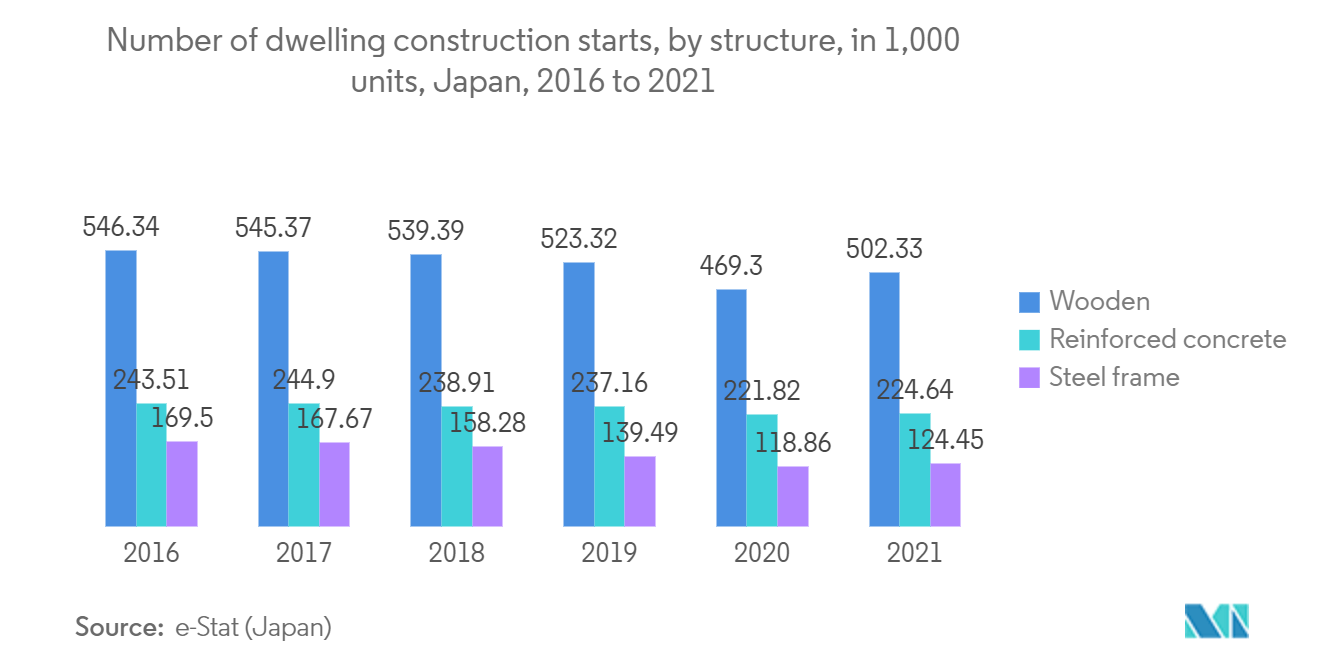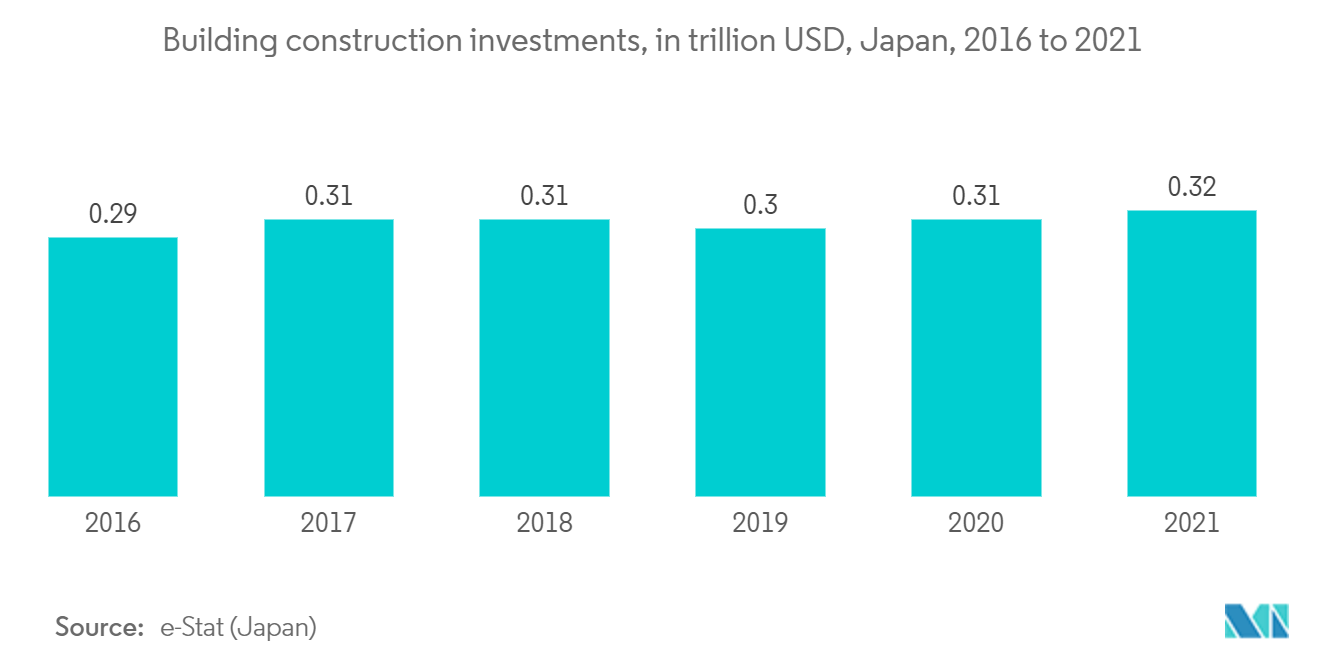Market Trends of Japan Prefab Wood Building Industry
This section covers the major market trends shaping the Japan Prefab Wood Building Market according to our research experts:
Wooden Structures are Becoming More Popular in Japan
Mid-rise structures made of wood are becoming more common in Japan. On October 1, 2021, a change to the Public Structures Wood Use Promotion Act will go into effect, increasing the use of domestic forest plantings created after WWII in both public and privately produced buildings. Mitsui Home is constructing its first wood-frame rental apartment complex in Inagi City, Tokyo. The first level of the five-story structure will be reinforced concrete, with two-by-four timber construction on floors 2 and 5. The building method is believed to be equivalent to reinforced concrete in terms of soundproofing, fireproofing, and seismic protection. Construction costs for the developer are around 10 ~ 20% lower than concrete, partly due to the fact that they were able to secure the wood materials prior to the current Wood Shock.
Nomura Real Estate Development has begun sales on a 14-story wood-frame hybrid apartment building in Tokyo's Ochanomizu neighborhood. This is Japan's first wood-frame hybrid condominium-style structure with more than ten floors. Structural features, such as pillars, are manufactured from locally obtained wood. Floors 2-11 were built with laminated veneer lumber (LVL) and reinforced concrete walls, while floors 12-14 were built with cross-laminated timber.

Government's Engagement in UK-Japan Prefab Relations Driving the Market
The comparison between the United Kingdom and Japan is quite offensive. They are so dissimilar, yet they also have so many commonalities. Housing industrialization is one among them. The current efforts to push industrialized processes in UK housing practice have not provided housebuyers with the benefits felt in Japan - production consistency and efficiency, price certainty, high customizability, the inclusion of energy-efficient options, and, most importantly, a customer-oriented business.
In September 2021, Sekisui, a Japanese modular housing company, invested GBP 18.5 million (USD 22.82 Million) in its UK branch. The Japanese builder's UK subsidiary formally entered the UK market in 2019 when it acquired a 35% investment in Urban Splash House Holdings, a modular housebuilding firm founded with developer Urban Splash and Homes England. Also, Daiwa House, located in Japan, established a UK subsidiary in February 2021 and is in negotiations with the Welsh government about establishing a plant.
Japan's industrialization of homes has been consistent and continues to increase their production methods, all based on heavy industry; whereas the UK is re-thinking compact industrialised procedures in an attempt to catch up with the standards and quality witnessed in other locations such as Japan.

